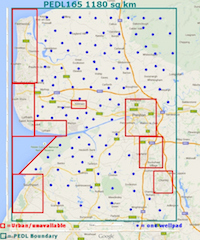Much has been written over the last few years about how fracking has revolutionised the US energy market and driven gas prices down for consumers. What is less well covered is the fact that fracking is based on a highly risky business model.
 A combination of hyperbolic productivity decline rates and relatively insignificant recovery rates for each well mean that shale gas companies have to continually sink more capital into their businesses by drilling more and more wells to maintain gas and cash flow. Some have likened this to a hamster wheel, others to Ponzi and pyramid schemes.
A combination of hyperbolic productivity decline rates and relatively insignificant recovery rates for each well mean that shale gas companies have to continually sink more capital into their businesses by drilling more and more wells to maintain gas and cash flow. Some have likened this to a hamster wheel, others to Ponzi and pyramid schemes.
[To read a more detailed discussion of the impact of these decline rates see this article ]
In a $100 a barrel for oil world this might have made some sort of sense. Indeed clearly it must have done, at least to some, although even when that was the case we still had CEOs complaining that the profit simply wasn’t there.
In 2012, with oil trading at over $100 a barrel Exxon’s CEO, Rex Tillerson, privately told a meeting at the Council on Foreign Relations:
We are all losing our shirts today. We’re making no money. It’s all in the red.
In 2016 in the US the blood was flowing. These headlines are from January 2016 and are just two of many.
We are listening to the death knell of those companies who are so exposed to debt that any reduction in cash flow may quickly prove fatal as they struggle to service interest payments on mountains of borrowings. The words “junk bonds” have been used to describe the frackers’ debt in the USA, and in the States they actually have revenues. Those who survive can only do so by cutting costs to the bone raising entirely legitimate concerns over safety.
Talking or fracked oil, the Guardian said in January 2015
Fracking is an expensive business. Depending on site structure, companies need prices of between $60 and $100 per barrel of oil to break even. As prices drop to around $55 per barrel, investments in the sector look ever more vulnerable.
In January 2016 however, oil was trading at around $30 a barrel and oil and gas prices are still tightly linked. In July 2018 the price has recovered to about $68, so sits at the low end of that break even spread.
In a 2013 submission to Parliament, Bloomberg said it would cost between 47 and 81 pence per therm to extract shale gas onshore in Europe (using current USD-to-GBP conversion rates). Other estimates broadly concur as can be seen in the following chart.

[ Source: http://energydesk.greenpeace.org/2015/01/08/gas-price-plunge-made-uk-fracking-unprofitable/]
The forecasts for wholesale gas prices in the UK are showing a trend that suggests that those costs won’t be achieved as a selling price in the immediate future, meaning that anyone extracting shale gas in the UK is likely to be doing so at a loss.

[ Source: https://www.erce.energy/graph/uk-natural-gas-futures-curve]
At these prices the idea of profitable fracking for gas in the UK, with break even costs between 47 and 102 pence a therm is frankly laughable because there is also an absolute imperative to add additional costs via Carbon Capture and Storage to meet our climate change mitigation obligations under the Fifth Carbon Budget.
Even the Task Force on Shale Gas accepts this concluding their third report with
We believe that government should commit to deploying the government energy specific revenue derived from a developed shale gas industry to investment in R&D and innovation in CCS and low carbon energy generation, storage and distribution.
Given the current constraints it is beyond me why anybody expects us to believe that a UK fracking industry is commercially viable in the foreseeable future without massive government intervention and subsidy. It is hard to imagine the government proposing this when it is so anti intervention and subsidy with regard to renewables.
If you can explain this please email me (use the “contact us” link in the left hand side bar) and I will consider adding any sensible replies here.
…. And of course it won’t have escaped your notice that the promised 1% of revenue “community benefits” would now only be worth half as much as when they were originally promised, will it?
Finally, we commend this presentation by Jeremy Legget to you. Jeremy has extensive experience in the energy industry and academia.
































